- Home
- M G Vassanji
And Home Was Kariakoo Page 6
And Home Was Kariakoo Read online
Page 6
Across the road is a well-tended garden overlooking the sea; at one end of it is a modest clock tower marked with the year 1901, only a few years after the Germans first arrived and took over the town. There appears to have been a coat of arms on it that has been removed. At the other end of the garden is the impressive-looking King George VI Memorial Library built in the 1950s, a long single-storey building with arched verandas, still in good shape. It was a gift to the town from the philanthropic Karimjee family. Here, on my previous visit, I had met a friendly librarian, who proudly showed me a small cabinet with a glass door containing rare editions of Stanley, Burton, and the like. Aware of their value, a predecessor had locked them up. I wonder now if the cabinet still stands there or has been “moved,” as used to be said of theft, but that’s impossble to ascertain on this Union Day holiday when everything is closed. The avenue and the streets behind contain a generous though rickety display of the old architecture—wooden buildings with latticed verandas and balconies, sloping roofs—of the kind that have been crushed and erased from the landscape of Dar. The wreckers won’t be long getting here, though: a container harbour is planned and the Usambara Railway will be rebuilt, bringing new development. Soon will come the concrete high-rises—turning the town into what? A mock Boston to Dar’s mock New York?
Taju’s car is an ancient Toyota, to which the man himself, unshaved and unkempt, is a fitting match. My window doesn’t close and rain pours liberally onto my lap. Pull the window up with your hands, he advises. I try, with partial success. We speak in Gujarati and there’s a casualness to our relationship, a kind of familiarity. He says his father was from Punjab but died when Taju was three; he also says he was brought up by his grandmother who was from Tanga. I conclude that he is not sure, or is embarrassed by his origins, but since he affirms to being a Sunni Muslim he must be partly Bhadala or Baluchi. He has a heart condition and has recently had a consultation in Dar, but cannot afford to go to India for treatment. We pass Hindu and Sikh temples, stop at a chai shop. It is actually the front room of a house, with an ordinary door for entrance; inside, a man in his forties serves from behind an iron cage of the sort one might find housing a bank’s vault. Chai is excellent but costs two and a half times what KT Shop charges in Dar. The man in the cage is chatty. He affirms that there have been robberies in the area. He’s from Moshi originally; his mother died recently after a leg amputation from diabetic complications. She used to walk barefoot and one day punctured a foot. The chevda and the burfis look fresh and mouth-watering. The bhajias come straight from the pan in the backroom, where someone, presumably the wife, is cooking.
The European cemetery is in a densely overgrown area where the ground is so muddy and slippery it reminds me of going home from school in Dar. The old German graves, green with mould, occupy a dank corner. At another location, close by, the British war dead are commemorated with a rather comically small pyramid in the middle of a neat compound covered with loose gravel; it’s fenced and gated. There is a wall of names inside, but they are too far from the fence to be read.
A walk away is the old Karimjee Secondary School, named after the well-known family that endowed it. It was renamed the Usagara Secondary School and looks as decrepit as any of the old endowed schools in the country that were taken over by the government.
In Dar, before leaving for Tanga, I met a former student of this once-famous school, a man of Asian origin called Colonel Kashmiri. He had volunteered into the King’s African Rifles while still at school, trained at Sandhurst, England, then joined the Tanganyika Rifles. When the army mutinied on January 20, 1964, a sorry day in the history of the newly independent country, he was dispatched “to Bombay” by the rebels but actually went to England with a contingent of British officers. When the mutiny was quashed—in a day—he was called back and given the charge to place the leaders of the mutiny under arrest. He is not a large man but looks trim and fit; he says he plays squash three times a week. In the army he quickly saw the glass ceiling for an Asian—a man junior to him was made brigadier and went on to become rather glamorous. He wished to quit but agreed eventually to be transferred to head a state-owned enterprise after a lengthy entreaty from President Nyerere. It would not look good for the only Asian officer in the army to resign. And so the soldier became a businessman … or was he pushed to conform to the stereotype? Now he is a consultant, and a current project concerns inviting tenders for the construction of several harbours in the country, including Tanga. A project worth hundreds of millions of dollars. It is through one of his Tanga contacts that I have hired the services of Taju and his dubious Toyota.
It turns out that my hotel is on the northern coast of Ras Kasone, the peninsula on which the ill-fated Indian Expeditionary Force landed in November 1914. Five troopships faced the coast on this side and landed their Indian men where I now sit watching the sunset. The map designates it as “Beach C,” but there’s no beach in sight. What a commotion then, how calm and peaceful now, how lovely the view. In the distance lies Toten Island, inhabited in the distant past, now barren. The yacht club is visible a few hundred yards away, a number of small boats bobbing on the water. The entire peninsula is lush and green, but there is no sisal anymore. A single road leads in from the town. On the way comes the Bombo Regional Hospital, the old stone building still standing and quite impressive; it was here that the armistice to end the Battle for Tanga was signed. It’s fallen into disuse, and a new structure stands before it.
The next day Taju drives me around the coast to the tip of the peninsula, where the wealthy have their large houses and from where you look upon an infinite expanse of ocean.
(Photo Caption 5.3)
6.
India and Africa: Of Entrepreneurs Old and New
ONCE WHILE TRAVELLING BY ROAD in western Gujarat, exploring my ancestral provenance, my companion and I stopped at a place called Droll. It was a typical Indian village of unpaved streets and make-do shops and homes. It could have been in Africa; there was, however, near the road a tall ancient gate bearing ornatery that suggested some history; it turned out that it was here that a Mughal governor on the run had stopped and killed himself in the fifteenth century. As we entered the village we asked around if there were Khojas living there, and were directed to a roadside paan-seller, who in a friendly gesture picked up two bright-green betel leaves, placed pinchfuls of various masala upon them, folded them into loose triangles, and handed us the finished paans. Only when we had the paans stuffed into our mouths did he give us the information we sought. The Khoja assistant headman, the kamadia, had his shop just across the road. He pointed it out.
We proceeded there, where a man sat on the floor at the doorway; after a brief chat, the mukhi, the headman himself, came by cheerfully and took us to his home. There, after tea in a cluttered yard that was the site of a cottage industry, he said he wanted us to meet someone special. Intrigued, we followed him to a rather dark room where we saw an intensely wrinkled and shrivelled old woman lying in her bed. She was “a hundred” years old. (The number, I discovered, was canonical in this part of India for very old people of indeterminate age.) Mongi Bai had been married to a trader from Dar es Salaam “during the war,” and returned home when he died. Prompted by her family, in her feeble voice as thin as the rustle of a dry leaf, Mongi Bai spoke the Swahili greeting “Jambo” to me, and I replied appropriately. It was a trivial occurrence in its way, in a small dark room at a sickbed, yet for me a thrilling moment of connection.
The commercial nexus between the western coast of India and the eastern coast of Africa, part of the so-called Indian Ocean trade, is many centuries old. Portuguese sailors bound for India in the sixteenth century reported the presence of Indians and Indian ships in Kilwa, Mombasa, and Malindi. The ships hailed from the great port of Cambay (present-day Khambat in Gujarat) and took away gold, ivory, and wax in exchange for cotton, silk, and other products. Writes the Portuguese captain Duarte Barbosa, in his description of the East African and M
alabar coasts circa 1500, “These ships of Cambay are so many and so large, and with so much merchandise, that it is terrible to think of so great an expenditure of cotton stuffs as they bring.” The thirteenth-century sun temple at Konark in eastern India has among its wall carvings (many of them erotic) one of a giraffe that the guides delight in pointing out: intriguing indication of the connection between India and East Africa.
It was in the middle of the nineteenth century, when Sultan Seyyid Said of Oman moved the capital of his Indian Ocean dominion to Zanzibar, that Indian traders began arriving at the island and the mainland coast in larger numbers. By the middle of that century these Indians—who were from western Gujarat, specifically from the regions of Kutch and Kathiawad—had settled as traders in Zanzibar and ports along the coast from Lamu in the north to Kilwa and Lindi in the south. Most came as penniless young men from their drought-prone villages and remained modest, but a few grew in wealth and status to become merchant princes wielding spectacular influence, as chronicled by western visitors to the island. These men were, successively, Jairam Sewji, Ladha Damji, and Tharia Topan, all from the Bhatia caste of Kutch, to whose firms the sultans farmed out their customs collection and were often in debt.
The Gujaratis who travelled and settled abroad, then, were traders; they preceded the white man in East Africa and were instrumental in the western exploration of the region. In Zanzibar, British, European, and American travellers would stop at the larger Indian businesses for their supplies before heading off on expeditions to the mainland interior, and—nobody likes a creditor—sometimes wrote about them in the most unflattering, Shylockian terms. Richard Burton, however, having spent time in India before arriving in Zanzibar, had a softer spot for them and treated them as familiars. Here is how he describes meeting one of the more prominent Kutchis of Zanzibar at the start of his East African Expedition in 1857:
We then took refuge against the sun at the shed called Place of Customs, where we were duly welcomed, whilst cloves were being weighed by the slaves. The Collector of government dues was a nephew of Ladha Damha [Damji] … the head of some ten Bhattias: they are readily distinguished by red conical fools’ caps, and by their Indian Dhotis, or loincloths.… We determined him to be an exceptional man, but afterwards, on the coast, we received the same civilities from all Hindu and almost all the Hindi (Moslem) merchants … Pisu … seated us on cots, and served upon a wooden tray sliced mango and pineapple, rice, ghee.…
With the advent of British and German colonialism towards the end of the nineteenth century, Zanzibar’s commercial power waned and businesses began to flourish on the mainland. Sewa Haji Paroo, also a Kutchi, dispatched his caravans from Bagamoyo and they went all the way to Taveta near Kilimanjaro. His apprentice, Alidina Visram, topped him to become “the uncrowned king of Mombasa,” supplying the dukas (shops) that were springing up on the routes from Mombasa to Uganda, eastern Congo, and southern Sudan. In 1890, A.M. Jeevanjee, a Bohra from Karachi, arrived in Mombasa and, an astute and driven businessman of a new generation, soon made his presence felt. He began his fortune by supplying goods (and even workers) to the Uganda Railway, which had begun construction. Much of early Nairobi, a railway town of wood and iron, was built by his firm.
These great merchants remain largely unknown even in East Africa. They collaborated with the colonial governments because they needed them; they were also philanthropists and ardent supporters of their own communities. Tharia Topan and Sewa Haji donated hospitals in Zanzibar and Dar es Salaam; Alidina Visram founded a school in Mombasa, and has a statue there. A.M. Jeevanjee founded the Standard, forerunner of the East African Standard, still in existence, and he donated the Jeevanjee Gardens in downtown Nairobi.
By the early twentieth century, Indians could be seen everywhere in East Africa, in every town, large and small, where their distinctive business strips are still in evidence—often a short row of brick buildings, each with a wide storefront and a residence above. In the even smaller village settlements outside the towns, often a single Indian family might subsist by providing essential supplies locally. But these “Jews” of Africa, as they were sometimes called, were rarely appreciated. To the poor Africans they were the ones raking in the cash. To the white colonials they were often an irksome, alien presence, the bone in the kabab—to use an Indian metaphor—spoiling their pure black-and-white picture of Africa—the whites the superior race out to convert and civilize the blacks; and later the benefactors bringing aid, the blacks the beneficiaries. In their writings and nostalgic musings about East Africa, the white settlers seem to have simply wished the brown man away. The “White mischief” television romances set in Kenya, for example, rarely figured the Asians.
One Sunday afternoon I read to an audience at Nairobi’s museum, during the opening there of the Asian Heritage Exhibit, a remarkably detailed memorial to the history of the Asian presence in East Africa. When I finished, a man in his fifties came over to me in tears. Who tells our stories, he said, who tells about what we have been through? This exhibit was an attempt to do just that. But there was a telling irony to it in the fact that more than half of the Asians had already gone away by the time it opened, taking their untold stories with them.
It seems incredible today to imagine Africa as the land of milk and honey that it was for Indians. Some of our grandfathers would return to Gujarat to visit, often to marry wives, and often they came bearing “attitude,” sporting western clothes (even hats) and looking conspicuously wealthy to the communities they had left behind. A small number of the returnees must have come to stay, however. The 1899 census of India reported some 100 Swahili-speakers. A Gujarali-Swahili dictionary was published in 1890.
During my visit to Droll in Gujarat, there was a woman present at the mukhi’s house who was all set to go to a wedding in a related village. The groom, I was informed with a twinkle in the mukhi’s eye, was a recent immigrant to Africa who had returned to marry. But he had gone to Angola. New frontiers had opened up in Africa, obviously, after the ravages of the long wars, and boys were setting off there to open shops and bring supplies, the way previous generations had done. Farther into Gujarat, when I visited a community office in the city of Junagadh to inquire about the village from which my great-grandfather had set off, I was told—over a cup of tea, naturally—stories of boys in recent times going away to Africa, and returning home arrogantly flaunting their new wealth. In other words, bearing “attitude.” History repeating itself, and evidently the new prosperity of India had not reached these villages. But there was another side to these stories of glorious return. In Jamnagar, where my mother’s family came from, I once sat in the shack of a poor family who were marrying off their sixteen-year-old daughter to a middle-aged man from Africa.
During my childhood one heard of exotic places upcountry where our people had settled—Mbarara, Mengo, Masaka, Nyeri, Isiolo, Voi, Nakuru, Mpwapwa, Singida, Mbeya, Lindi, Musoma, Sumbawanga, Moyale, and so on, dotted across the vast reaches of British East Africa—from the border with Mozambique to that with Rwanda, from the Indian Ocean to lakes Tanganyika and Victoria, between Zambia and Somalia, often with only one or two families to a village, doing the same old business—buying produce, selling essential supplies. These were names to stir the imagination, places one might visit one day. My cousins who stayed with us in Uhuru Street would set off during holidays for a village called Bariadi near Lake Victoria to visit their parents, and their stories of exciting train rides and dog-swallowing pythons and mysterious grandmothers made us goggle-eyed and envious. Kids from those interior regions—“bhurr” was the term for those places—would come to Dar for their high school education, and were treated as hicks; there was a naïveté to them, and yet, because they had stayed away from the watchful eyes of the larger, more fastidious religious community, they also seemed less inhibited. They would always carry the mark of their town; it identifies them often to this day—“Mehboob of Ifakara”—and some never completely blended into the rowdy fa
miliarity that was Dar es Salaam.
Following the nationalizations of private properties in Tanzania in the 1970s heyday of socialism, and the expulsion of Asians from Uganda by Idi Amin soon after, and the Africanization policies in Kenya that we would now call racist, and the forced marriages of Asian girls in Zanzibar, the Asian population—frightened and uncertain—depleted, was welcomed to the cities of Canada. As a result there exist now entire ghost streets, shorn of their Asian populations, shops and homes not effectively occupied, in places like Tukuyu, Kilwa, Lindi, Kigoma. Coincidentally, in the village of my great-grandfather too, in Gujarat, following the widespread violence of 2002 the Khoja neighbourhood had been depleted, the prayer house padlocked. Thus the fate of minorities.
But in some, the indomitable mercantile spirit lives on; home is where the trade winds take you. The descendants of the merchants and pilots whom Vasco da Gama and Camõens and Duarte Barbosa met on the coast along the Indian Ocean will go to any corner of the world to do business, and still find East Africa a profitable place.
Property values are down, my friend Karim says, when we meet in Toronto for coffee. But don’t believe what they tell you. He means media reports, I presume, soon after the 2008 recession. There is that perpetual smile on his soft, fair, baby face that makes you wonder sometimes if he’s not pulling your leg with his fantastic tales about making money. The phone in his hand, at this patio outside a Toronto Starbucks, is of the cheapest sort—consistent with the manner of the typical Gujarati vania, the business caste: wealth is not for show, but to make. He’s made and lost some millions in hotels and property in Canada, the United States, the Bahamas, and London. He’s currently developing a resort in Zanzibar. And he’s based in Dubai, where he and his partners have written off some twenty condominiums after the real-estate bubble there burst. Time was, he says, when you paid someone to stand in a queue to book a condo for you, and you turned a profit the next day. But now he’s in neutral gear.

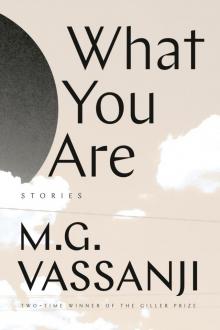 What You Are
What You Are A Delhi Obsession
A Delhi Obsession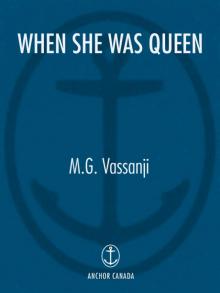 When She Was Queen
When She Was Queen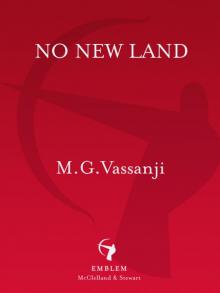 No New Land
No New Land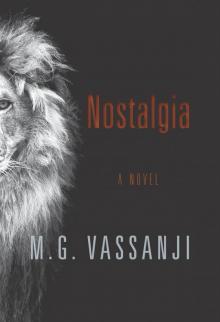 Nostalgia
Nostalgia Mordecai Richler
Mordecai Richler The Book of Secrets
The Book of Secrets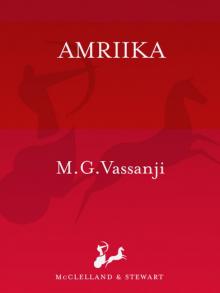 Amriika
Amriika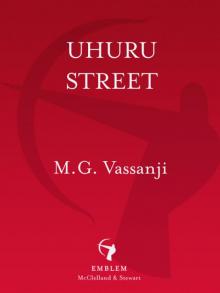 Uhuru Street
Uhuru Street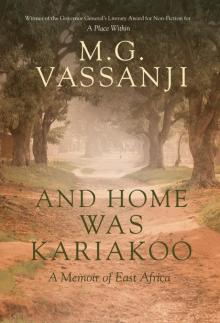 And Home Was Kariakoo
And Home Was Kariakoo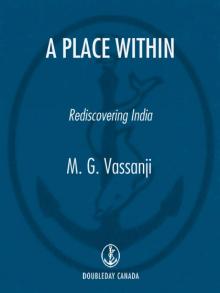 A Place Within
A Place Within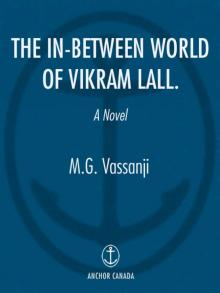 The In-Between World of Vikram Lall
The In-Between World of Vikram Lall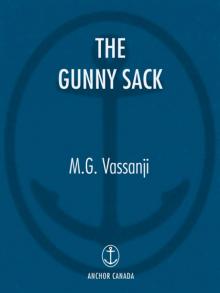 The Gunny Sack
The Gunny Sack